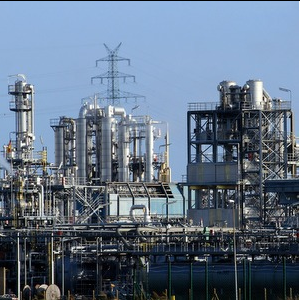The scientists from Samara National Research University have developed and synthesized efficient renewable silica gel based catalysts* that will help to reduce the cost of some processes in the petrochemical plants and oil refineries. Theoretical studies and experimental work were performed by the research team supervised by Professor Angela Bulanova of the Department of Physical Chemistry and Chromatography within the project supported by the Russian Foundation for Basic Research (RFBR).
"Our Project is intended to obtain the new generation catalysts for selective hydrogenation of aromatic hydrocarbons, including benzol**. Such research findings shall become the basis for the new promising technologies in petrochemistry and oil refinery. In the course of experimental work we have synthesized efficient catalysts based on the mesoporous silica gels that have sufficient advantages over the catalysts currently used in the petrochemical and oil refinery industries. These advantages include lower levels of operating temperatures and pressure, high conversion and renewability of used catalysts", - said Elena Tokranova – Project Manager, postgraduate student of the Department of Physical Chemistry and Chromatography.
Silica gel is a desiccated gel generated from the oversaturated solutions of silicic acids. In our everyday life we know this material as cat litter. One also may find this material in small sachets placed in boxes with new shoes. In industry silica gels are used as adsorbents, for gases desiccation, purification of lubricants and oils. They are literally penetrated with a labyrinth of pores which form a huge interior surface of dozens and even hundreds square meters per one gram of weight and, due to such structure, these materials may be used as efficient catalyst carriers. Mesoporous silica gels are those silica gels that have pores with diameter from 2 to 50 nm. Catalyst substance is applied on the interior surface of these pores by various methods.
Currently, in industrial plants nickel is generally used as an active component of the aromatic hydrocarbons hydrogenation catalysts. Such noble metals as palladium, platinum or ruthenium in many ways are surely more effective than nickel in terms of their chemical properties, however, their price is much higher. The scientists from Samara University managed to drastically increase the activity of nickel catalysts through modifying the mesoporous silica gel with small amounts of rare-earth elements, such as dysprosium and lanthanum.
"The goal of our study was to increase catalytic activity of the catalyst due to introduction of a small percentage of dysprosium or lanthanum. At that, total content of nickel may be reduced which makes the catalyst less expensive. Moreover, the new catalysts allow the hydrogenation reaction being carried out at lower temperatures and pressure, i.e. the companies may reduce the costs of their products by reducing the energy consumption needed for production, thus making the hydrogenation processes more cost-efficient and environmentally friendly. These research findings are vitally important for Samara region, since hydrogenation processes are widely used in chemical, petrochemical and oil refinery industries of the region", - said Elena Tokranova.
The catalyst based on a mesoporous silica gel doped with dysprosium and modified with nickel (Dy-Ni/MC) was found the most efficient among the newly developed catalysts. Its operating temperature is 150 degrees Celsius, pressure – 3 atmospheres, hydrogenation time – 20 minutes. For comparison: a typical nickel catalyst on a highly-dispersive carrier used in the industry has an operating temperature of 250 degrees Celsius, pressure – 20 atmospheres, hydrogenation time – 30 minutes.
For reference
* Catalyst is a substance which, when placed in small amounts into a mixture of substances, triggers chemical reaction between these substances or increases the speed of this reaction.
** Hydrogenation of aromatic hydrocarbons ranks among pivotal processes in manufacture of products in the petrochemical industry. Benzol hydrogenation process is the basis for production of caprolactam – a raw material for production of polyamide plastics and fiber. KuibyshevAzot in Samara region is one of the leading chemical companies in Russia and a leader in Russia and Eastern Europe in production of caprolactam and polyamide, largest manufacturer of technical and textile rayon, cord fabric, polyamide and blended fabric in Russia.
- Shafigulin R.V., Filippova (Tokranova) E.O., Shmelev A.A., Bulanova A.V. Mesoporous Silica Doped with Dysprosium and Modified with Nickel: A Highly Efficient and Heterogeneous Catalyst for the Hydrogenation of Benzene, Ethylbenzene and Xylenes // Catalysis Letters. – 2019. – Vol. 149. – No. 4. – P. 916–928.
- Filippova (Tokranova) E.O., Shafigulin, R.V., Tokranov A.A., Shmelev, A.A., Bulanova, A.V, Pimerzin A.A., Karavaev A.A.: Study of adsorption properties of synthesized mesoporous silica doped with dysprosium and modified with nickel // J. Chin. Chem Soc. – 2020. – V. 67, – P. 1167–1173.
- Filippova (Tokranova) E.O., Vinogradov K.Yu., Shafigulin R.V., Bulanova A.V. Comparison of adsorption properties of mesoporous silica doped with dysprosium and modified with copper and silver using method of inverse gas chromatography //Sorption and chromatographic processes. – 2020. – V. 20. – No. 6. – P. 696–706.
- Filippova (Tokranova) E.O., Shafigulin R.V., Bulanova A.V. Kinetic characteristics of catalysts based on mesoporous silica gel doped with dysprosium and modified with Ni, Cu, Ag in xylene hydrogenation reactions // Journal of Physical Chemistry. – 2021. – V.95, – No. 4. – P. 1–7
Photo: pixabay.com
 RU
RU  EN
EN  CN
CN  ES
ES 